Weaving on a Jacquard-type handloom has led me to design weave structures intended for use in a single piece of weaving. This article describes some triple weave structures that were created to solve particular design challenges.
I put a cyan, magenta and yellow 10/2 cotton warp set at 64.5 epi on my TC-1 loom with the idea of using it for triple weave. After weaving sample blankets of tabby triple weave structures for 3, 4 and 5 wefts, I realized I didn’t find these weaves particularly appealing with this warp. My eyes hungered for more visual interest that was provided by the rather coarse tabby I was producing.
I turned to Oelsner’s A Handbook of Weaves as a source of textured weaves and to www.handweaving.net as a source of Oelsner’s weave drafts in WIF format. Although I wove samples from these Oelsner categories: breaks, crepe, deflection, diversified, honeycomb and huck, the crepe weaves best provided the subtle textures I wanted.
Sophisticated weave design programs provide a decomposed view that makes it easier to understand what is happening in each section of weave structures for multiple warps and/or wefts. The weaves discussed in this article are shown in a decomposed view for this reason. If you are not familiar with decomposed views of weaves, Arahne provides a good explanation of how to use ArahWeave’s decomposed view to design multi-layer weaves.
The first piece I wove was an abstract representation of water in 3 colors:
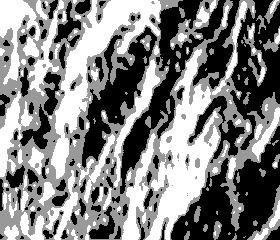
The image contains fairly large areas of solid white and black. These colors needed to be represented with weaves in which the layers were stitched together to prevent baggy pockets from forming. I first tried just stitching the middle and bottom layers together to produce a more stable fabric. Eventually, the white areas were woven with a weave in which the middle (yellow) warp stitches into the top layer and the bottom layer is stitched with the middle weft.
Here is a detail from a good simulation of the final fabric:
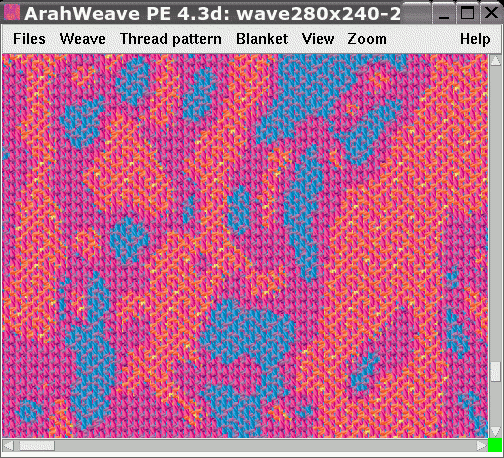
The magenta areas have a tabby face and are not stitched:
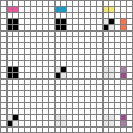
The blue areas have Oelsner crepe 828 on the face and are bottom stitched:
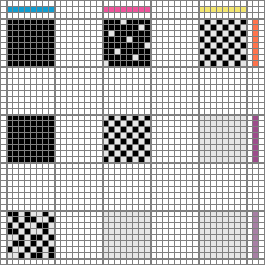
The orange areas have Oelsner crepe 818 on the face and are doubly stitched:
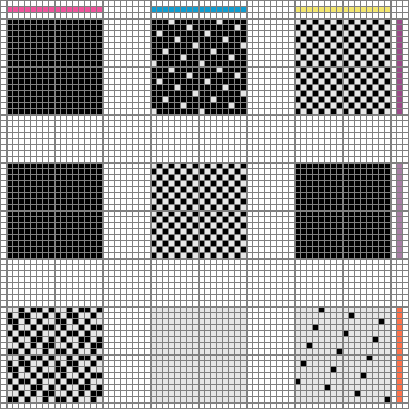
The design for the next piece had a large background area of a single color:
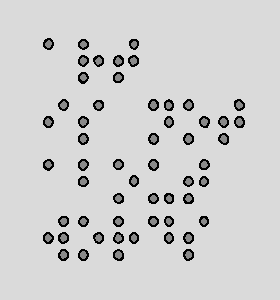
I chose Oelsner crepe 854 for the the background areas of the face layer and used tabby for the other face weaves. To successfully weave this design as triple weave, the background area had to be stitched. Using crepe 854, allowed the stitching points to be hidden. Every warp was stitched once per repeat under a weft dominant area as shown by the pink squares in this draft:
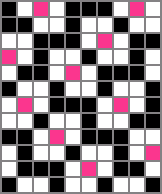
Some problems appeared only after sampling. I found I needed to edit the design image to ensure that the rims of the dots were at least 2 pixels wide. Also, the layer interchanges at the dots were much denser than the background areas. This problem was corrected by floating the middle layer in the dot borders and by weaving basket weave on the back of the dot centers.
To get good coverage, the top layer of the light grey area was woven with a weft of 3 strands of 20/2 cotton (blue) using the following draft:
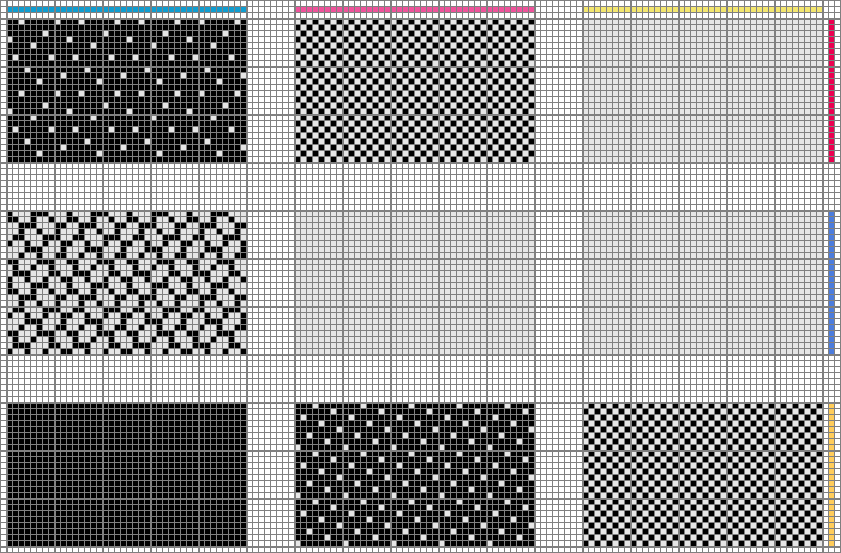
The dot centers were woven with the following draft that weaves a basket weave on the bottom layer:
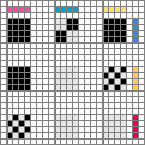
The dot borders were woven with the following draft in which the threads of the middle layer are allowed to float:
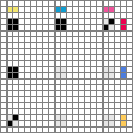
Here is a detail from a simulation of the final design:
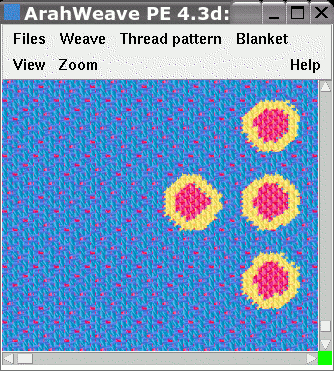
In the simulation, the face layer stitch points are visible. In the woven fabric, these stitch points are invisible as intended. That is why the magic is still in the weaving.
All draft images in this article were generated using ArahWeave PE.
An earlier version of this article was written for the Complex Weaver’s Jacquard study group.
